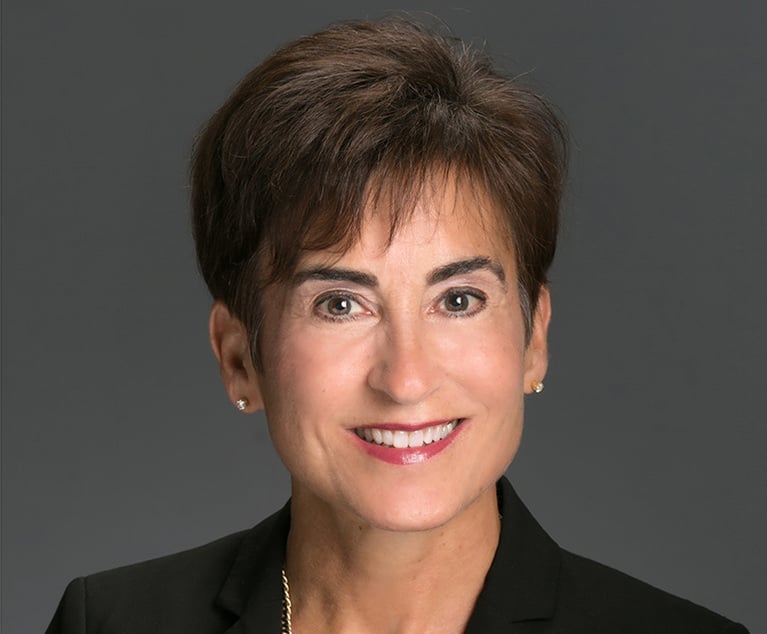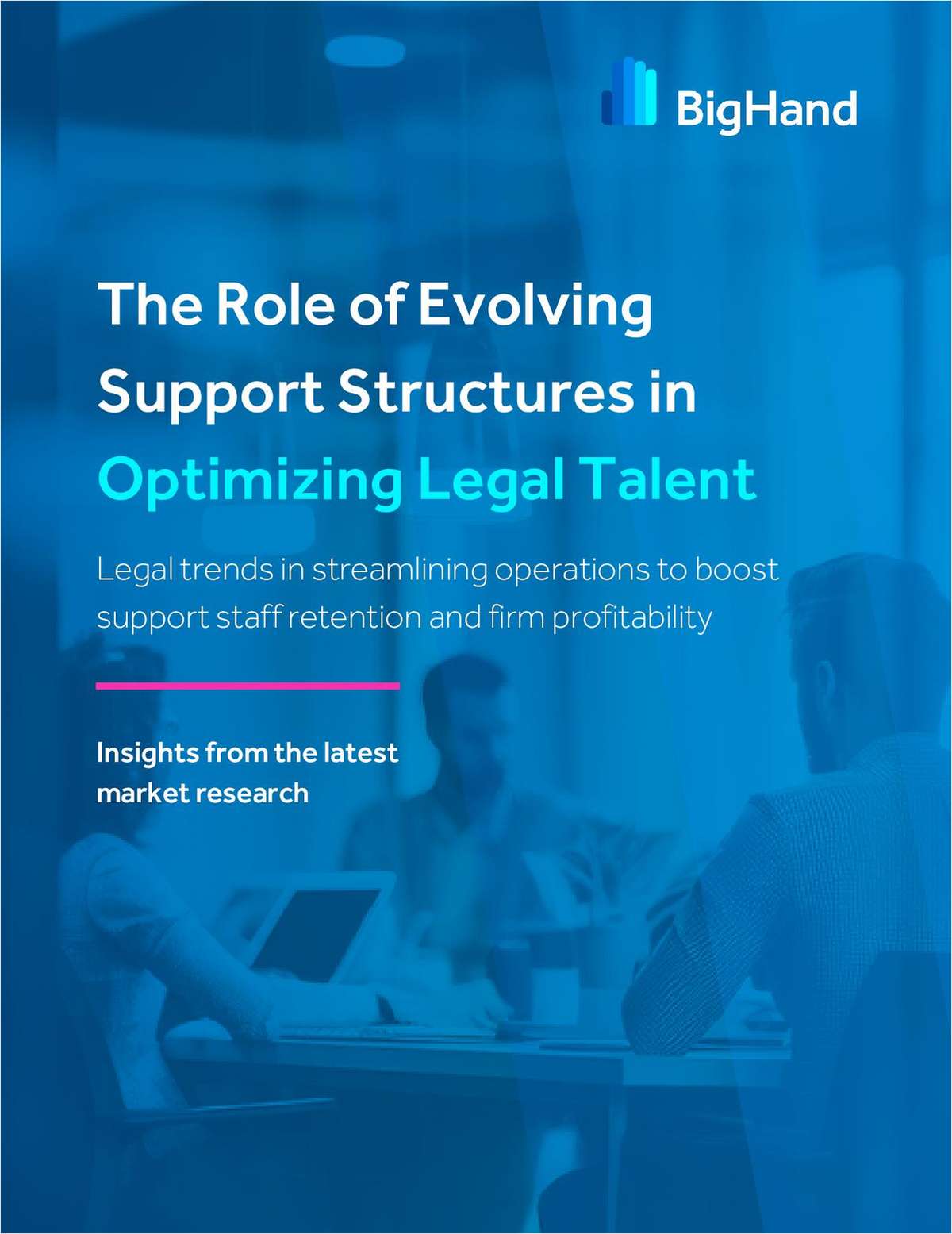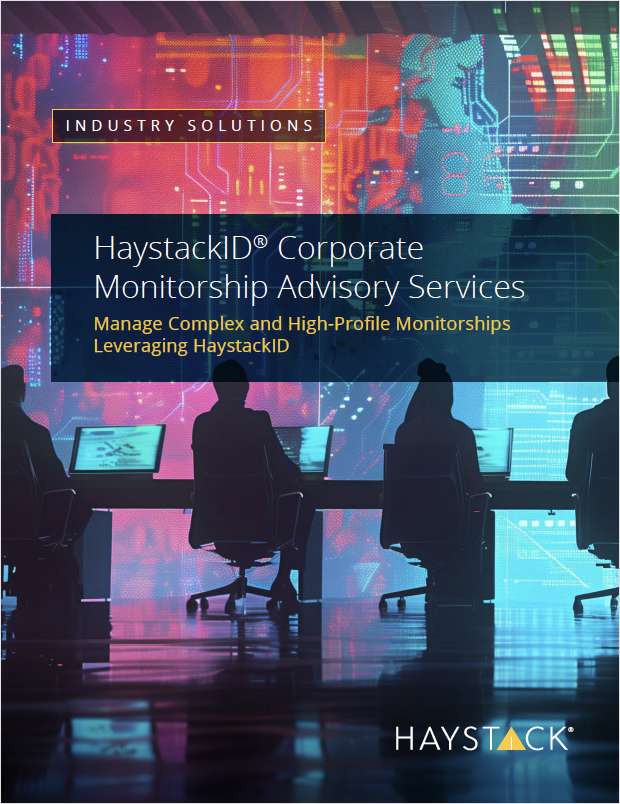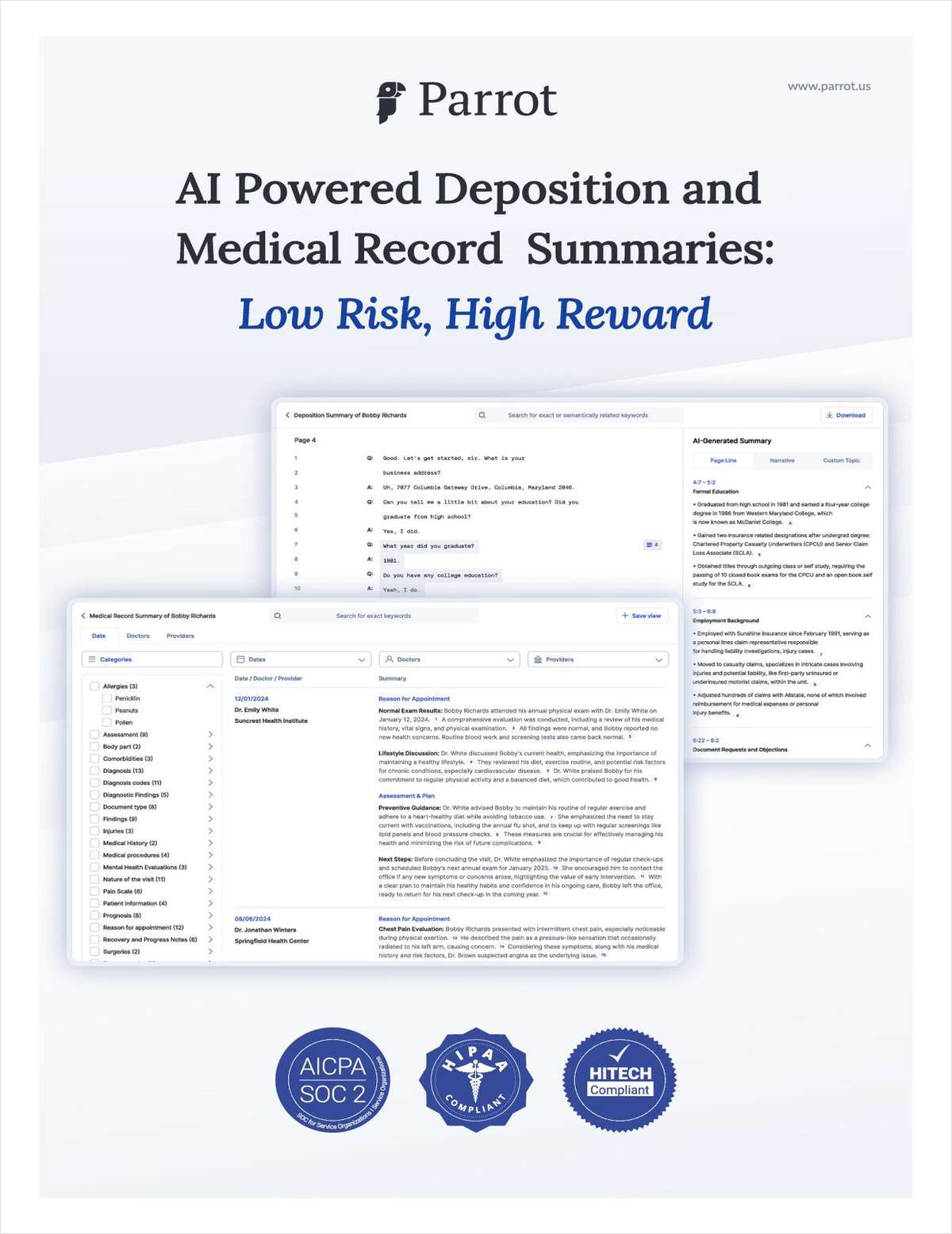Should Mid-Market Firms Be Worried About ALSPs?
Commodity work is vulnerable, and firms need to emphasize communication and the unique and sophisticated nature of their work.
August 02, 2019 at 03:47 PM
6 minute read
 bigstock
bigstock
Editor’s Note: This story is adapted from ALM’s Mid-Market Report. For more business of law coverage exclusively geared toward midsize firms, sign up for a free trial subscription to ALM’s weekly newsletter, The Mid-Market Report.
A lot has been written about the growth of alternative legal service providers and how they are disrupting the legal market. But how big a threat are ALSPs to mid-market firms, and what should midsize firms do to stay competitive?
Talk to law firm consultants and mid-market firm leaders, and not surprisingly, there isn’t any consensus.
But even those who didn’t see them as an immediate threat for midsize firms generally acknowledged they had the potential to take work away from them.
Several said there doesn’t appear to be an immediate threat because the bigger ALSPs—the Big Four accounting firms, Axiom, UnitedLex—are focused on servicing larger clients outside of most midsize firms’ client bases.
“They are going after really large companies,” said Robert Kaplan, the leader of Virginia-based Kaplan Voekler Cunningham & Frank. Kaplan’s firm does a lot of business law, business litigation and REIT work. He estimated that 80% of their work is national and outside of Virginia: “I think midsize firms are really kind of insulated.”
Consultant Marcie Borgal Shunk, president and founder of the Tilt Institute, echoed that sentiment.
She said the ALSPs have been more focused on Fortune 1000 companies and less on middle-market companies because the larger companies have higher-volume work.
But she cautioned that mid-market firms shouldn’t be lulled into thinking they’re completely safe.
“It depends on the focus of the firm and the type of work [less on the size of the firm],” she said. “Run-the-company work [as opposed] to bet-the-company work is more vulnerable.”
“Employment, discovery, document review, due diligence, IP… that work is going in-house or to the ALSPs,” Borgal Shunk said.
Nicholas Bruch, director of ALM Intelligence Fellows Institute & principal analyst, agreed that the bigger ALSPs were focused on going after bigger clients. But he said that didn’t mean mid-market firms were in the clear.
“The mid-market firms, they should be nervous,” Bruch said. “Not today, but down the road.”
Unlike Kaplan, James Goodnow, president and managing partner of Fennemore Craig, a Mountain West firm based in Arizona, said ALSPs do pose a threat to midsize firms.
“You better believe midsized firms need to be worried about ALSPs,” Goodnow said in an email to the Mid-Market Report. “The pace of growth and speed with which ALSPs are gaining market share is staggering. But firms with their heads buried in the sand might not notice. Clients rarely send emails announcing they are pulling work. Instead, they move it silently. ALSPs are taking direct aim at law firms by marketing against them—decrying the ‘black hole’ of law firm legal fees and offering fixed flat fees and tighter budgeting.”
Others are less convinced.
Aric Press, the longtime former editor-in-chief of The American Lawyer (and former colleague) and partner at PP&C Consulting LLC, said the threat depends on the types of work midsize firms do.
“[ALSPs] will be a threat to some and not a threat to others,” he said. “I think it is a very extremely splintered market. It’s very hard to generalize.”
Press said that over the last three to four years, he has spoken with hundreds of clients and “for the most part, it’s not a topic that comes up.”
“I don’t see it being a threat to most midsize firms,” he said.
Given his experience as a journalist, particularly years spent covering the legal industry, Press said that he understood why it’s “attractive to think the next big thing is around the corner.”
That is, he added, “until you realize later that corner is a lot farther down the road.”
How Big Is Their Share?
Press acknowledged that people are interested in what ALSPs are doing, and they are growing, “but it’s a tiny part of the market.”
They can’t negotiate a deal like a high-end transactional lawyer or litigate like a top tier trial attorney, he said.
“Unless and until the ALSPs are capable of doing that high-level work … until they can do that, why is the client going to change?” Press asked.
But Bruch said the ALSPs are adept at identifying mid-level work and finding solutions that turn it into low-level work, allowing them to expand their market share. So there’s no reason to believe they won’t stop growing.
How big a part of the market will they be? Bruch asked rhetorically. Five percent? Ten percent?
“Let’s assume it will be 20%,” he said. Given how they use process improvement, engineering and software, mid-market firms can’t compete in terms of the technology and the investment ALSPs apply to certain types of work.
Online Providers Take Work Too
Since technically ALSPs include everything from the Big Four to e-discovery companies to online service providers like LegalZoom, there are some unique challenges for midsize firms.
Kaplan said online providers “from a market perspective, they aren’t much of a competitor for our firm,” and added that if one of his firm’s clients winds up using an online outfit, “nine out of 10 times,” his firm is redoing the work.
But he admitted they’ve still had an impact on his firm.
“The obstacle for us is that they really create unrealistic expectations for the consumer market,” he said.
Henry L. Bowden Jr. of Bowden Spratt, an 11-lawyer Atlanta trusts and estates firm, noted that the elimination of the estate tax for any couple with less than $22.4 million in assets eliminates some need for complex legal work around trusts and estates. He said he assumes ASLPs like LegalZoom “can step into the breach and do a good job” for people who want simple wills that leave everything to a spouse or child.
The tax law changes means that only 0.2 percent of the people in the U.S. have assets that can still benefit from wills and estates established to work around the 40% tax rate for inheritances over $22.4 million per couple. Some of those in that rarified demographic are his firm’s clients, said Bowden.
“We are fortunate to represent some pretty wealthy people,” he said.
Lizzy McLellan, Jonathan Ringel and Mark Bauer contributed to this report.
Editor’s note: Next week we will look at how ALSPs are operating and taking market share, and what mid-market firms can do to compete.
This content has been archived. It is available through our partners, LexisNexis® and Bloomberg Law.
To view this content, please continue to their sites.
Not a Lexis Subscriber?
Subscribe Now
Not a Bloomberg Law Subscriber?
Subscribe Now
NOT FOR REPRINT
© 2025 ALM Global, LLC, All Rights Reserved. Request academic re-use from www.copyright.com. All other uses, submit a request to [email protected]. For more information visit Asset & Logo Licensing.
You Might Like
View All
Landlord Must Pay Prevailing Tenants' $21K Attorney Fees in Commercial Lease Dispute, Appellate Court Rules
4 minute read
State Appellate Court Settles Fee Battle Between Former Co-Counsel in Patent Litigation
5 minute read
Return to Work Mandates Among Current Mental Health Stressors for Legal Professionals
1 minute read
Internal GC Hires Rebounded in '24, but Companies Still Drawn to Outside Candidates
4 minute readTrending Stories
- 1Parties’ Reservation of Rights Defeats Attempt to Enforce Settlement in Principle
- 2ACC CLO Survey Waves Warning Flags for Boards
- 3States Accuse Trump of Thwarting Court's Funding Restoration Order
- 4Microsoft Becomes Latest Tech Company to Face Claims of Stealing Marketing Commissions From Influencers
- 5Coral Gables Attorney Busted for Stalking Lawyer
Who Got The Work
J. Brugh Lower of Gibbons has entered an appearance for industrial equipment supplier Devco Corporation in a pending trademark infringement lawsuit. The suit, accusing the defendant of selling knock-off Graco products, was filed Dec. 18 in New Jersey District Court by Rivkin Radler on behalf of Graco Inc. and Graco Minnesota. The case, assigned to U.S. District Judge Zahid N. Quraishi, is 3:24-cv-11294, Graco Inc. et al v. Devco Corporation.
Who Got The Work
Rebecca Maller-Stein and Kent A. Yalowitz of Arnold & Porter Kaye Scholer have entered their appearances for Hanaco Venture Capital and its executives, Lior Prosor and David Frankel, in a pending securities lawsuit. The action, filed on Dec. 24 in New York Southern District Court by Zell, Aron & Co. on behalf of Goldeneye Advisors, accuses the defendants of negligently and fraudulently managing the plaintiff's $1 million investment. The case, assigned to U.S. District Judge Vernon S. Broderick, is 1:24-cv-09918, Goldeneye Advisors, LLC v. Hanaco Venture Capital, Ltd. et al.
Who Got The Work
Attorneys from A&O Shearman has stepped in as defense counsel for Toronto-Dominion Bank and other defendants in a pending securities class action. The suit, filed Dec. 11 in New York Southern District Court by Bleichmar Fonti & Auld, accuses the defendants of concealing the bank's 'pervasive' deficiencies in regards to its compliance with the Bank Secrecy Act and the quality of its anti-money laundering controls. The case, assigned to U.S. District Judge Arun Subramanian, is 1:24-cv-09445, Gonzalez v. The Toronto-Dominion Bank et al.
Who Got The Work
Crown Castle International, a Pennsylvania company providing shared communications infrastructure, has turned to Luke D. Wolf of Gordon Rees Scully Mansukhani to fend off a pending breach-of-contract lawsuit. The court action, filed Nov. 25 in Michigan Eastern District Court by Hooper Hathaway PC on behalf of The Town Residences LLC, accuses Crown Castle of failing to transfer approximately $30,000 in utility payments from T-Mobile in breach of a roof-top lease and assignment agreement. The case, assigned to U.S. District Judge Susan K. Declercq, is 2:24-cv-13131, The Town Residences LLC v. T-Mobile US, Inc. et al.
Who Got The Work
Wilfred P. Coronato and Daniel M. Schwartz of McCarter & English have stepped in as defense counsel to Electrolux Home Products Inc. in a pending product liability lawsuit. The court action, filed Nov. 26 in New York Eastern District Court by Poulos Lopiccolo PC and Nagel Rice LLP on behalf of David Stern, alleges that the defendant's refrigerators’ drawers and shelving repeatedly break and fall apart within months after purchase. The case, assigned to U.S. District Judge Joan M. Azrack, is 2:24-cv-08204, Stern v. Electrolux Home Products, Inc.
Featured Firms
Law Offices of Gary Martin Hays & Associates, P.C.
(470) 294-1674
Law Offices of Mark E. Salomone
(857) 444-6468
Smith & Hassler
(713) 739-1250








